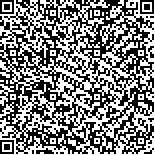| 摘要: |
| [摘要] 目的 探讨病灶周围组织与病灶表观扩散系数(apparent diffusion coefficient,ADC)差值在乳腺良恶性病变鉴别诊断中的价值。方法 回顾性分析60例经手术及病理证实的乳腺病变患者的MR资料,通过分析病变的弥散加权成像(diffusion weighted imaging,DWI)的ADC值及ADC差值,并经统计学处理,比较两者的差异。结果 60个病灶中有32个恶性,28个良性,应用ADC值法最佳诊断值为1.30×10-3 mm2/s,诊断的敏感度、特异度、准确率分别为93.8%、75.0%、85.0%;应用ADC差值法最佳诊断值为0.47×10-3 mm2/s,诊断的敏感度、特异度、准确率分别为96.0%、82.1%、90.0%。结论 ADC差值法在评价乳腺良恶性病变有较高的诊断价值,可以有效弥补ADC值法诊断的不足,可作为功能成像DWI分析方法的有效补充,作为乳腺疾病的常规诊断方法。 |
| 关键词: 乳腺病变 磁共振成像 弥散加权成像 |
| DOI:10.3969/j.issn.1674-3806.2016.11.20 |
| 分类号:R 737.9 |
| 基金项目: |
|
| Study on ADC difference value in identification between benign and malignant breast lesions |
|
HUANG En-shan,WEI Yin,LI Rui-xiong,et al.
|
|
Department of Radiology,the People′s Hospital of Wuzhou,Guangxi 543000,China
|
| Abstract: |
| [Abstract] Objective To investigate the difference of the surrounding normal tissue and lesion apparent diffusion coefficient(ADC) value in identification between malignant and benign breast lesions.Methods The MR features of 60 cases with surgically and pathologically proved breast diseases were respectively reviewed. The ADC and ADC values of diffusion weighted imaging(DWI) were statistically compared.Results There were 32 malignant and 28 benign lesions in the 60 lesions. The optimal threshold value for ADC of breast lesions was 1.30×10-3 mm2/s,and the sensitivity, specificity and accuracy were 93.8%, 75.0% and 85.0% respectively; The optimal threshold value for ADC difference value of breast lesions was 0.47×10-3 mm2/s, and the sensitivity, specificity and accuracy were 96.0%, 82.1% and 90.0% respectively.Conclusion ADC difference value plays an important role in identification between benign and malignant breast lesions, which can be an effective complement to the functional imaging DWI for the diagnosis of breast diseases. |
| Key words: Breast disease Magnetic resonance angiography Diffusion weighted imaging |

